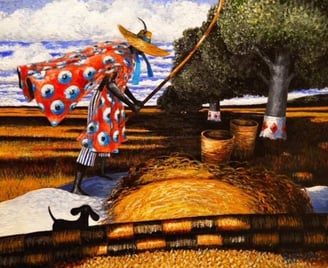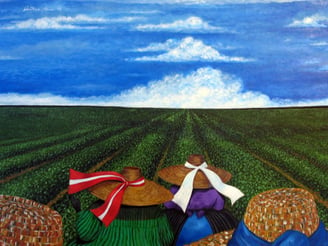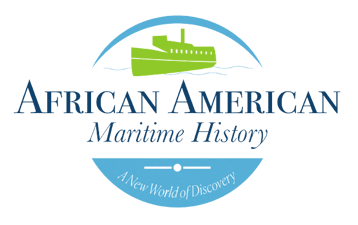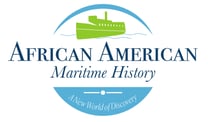African American Maritime History Series--Introduction


Long before the Portuguese wandered along the West African coast, Africans had a global reputation as skilled swimmers, divers, and surfers. Portuguese explorers were amazed by the swimming and diving abilities of Africans. Senegambian canoe men were impossible to capture after they leaped into water. The economic dynamics of the Atlantic world linked Asia and Europe to African in ways that produced significant commercial activity long before the Atlantic triangular trade to include enslavement of Africans. The history of maritime and ancient maritime trade between civilizations predated Atlantic trade routes by thousands of years.
Long before the Portuguese wandered along the West African coast, Africans had a global reputation as skilled swimmers, divers, and surfers. Portuguese explorers were amazed by the swimming and diving abilities of Africans. Senegambian canoe men were impossible to capture after they leaped into water. The economic dynamics of the Atlantic world linked Asia and Europe to African in ways that produced significant commercial activity long before the Atlantic triangular trade to include enslavement of Africans. The history of maritime and ancient maritime trade between civilizations predated Atlantic trade routes by thousands of years.


Rice as a crop in the Americas was the major driver of the Atlantic trade of enslaved Africans and maritime activity is a significant part of the story. Maritime activity moves people, food, and changes what and how people cook and eat. Slavery in the Americas had huge maritime elements (shipping captured people; shipping food stu" as part of the triangular trade; naval battles attributed to race lines). White Europeans had no experience growing or cooking rice. Africans did and were deliberately earmarked, captured and enslaved to grow rice in the Southern United States Lowcountry. African enslaved cooks were given European recipes and then, gave them African interpretation. Freed African Americans continued the culinary traditions. Other food ways involving the Atlantic coast from Maine to the Lowcountry involved the seafood caught such as oysters, shrimp, fish, and other sea delicacies. Enslaved patroons (boat captains) provided an invaluable service to planters, who had to bring their staple products—rice, indigo and cotton to market, but they were also purveyors of information for networks of rebellious communications and illicit trade. As the fourth largest city in colonial America and the wealthiest, there are very few accounts of the city of Charleston, South Carolina’s contribution to American maritime history and development especially from an African American perspective. Since the settlement of Charleston in 1670, Charleston, the Lowcountry and the Southern Atlantic seaboard was propelled by maritime commerce. Charleston, a city where goods and materials were brought to ships from the surrounding region for delivery elsewhere, and a place where ships brought humans, goods, and materials to be sold or shipped. The port of Charleston dominated maritime trade in the American South in colonial and early antebellum days. Between the Revolution and the Civil War, more African Americans were employed or enslaved as workers in the maritime trades than in any other industry.


Presently, little remains of Charleston, Lowcountry or the Southern Atlantic African American maritime history. When one considers the numbers and types of ships that called on Charleston and other southern port cities, were built there, and are otherwise connected with these ports, there is extraordinarily little mention of the myriad of enslaved Africans laboring on the water and on the wharves throughout the Lowcountry or the melodramatic escapes by enslaved persons using maritime means and methods. The economic heyday of Charles Town, 1720 to 1820 coincided with the peak of colonial sailing ships. International trade which also incorporated the transatlantic slave trade spawned the wealth that built the grand historic homes and gardens of the South Carolina cities of Charleston, Beaufort, and Georgetown. South Carolina’s plantation economy thrived on maritime global trade and the hundreds of ocean borne vessels that docked in Charleston each year to load rice, indigo and Sea Island cotton for European markets. By the 1720s, the slave trade from Africa to Carolina also flourished. From 1716 to 1807, the Holy City, as Charleston was so ironically nicknamed, was the port-of-entry for an estimated 40 percent of all enslaved persons brought into America. "Ships from South Carolina carried rice, cotton, and other goods back to Europe." (“Rise and Fall and Rise: South Carolina’s Maritime History”) However, the slave trade is not the only subject related to the African American maritime experience. African Americans were involved in virtually every aspect of antebellum maritime commerce from laborers to sailors to vessel ownership. The Underground Railroad also made extensive use of ships to spirit slaves to freedom in the North and in Canada. Following the Civil War, African Americans sought economic freedom and freedom from repression by becoming crew and stewards in the coastal packet and passenger trades. Thus far, there has been insu"icient study or discovery of the material record of most of these maritime endeavors by Africans and African Americans. The purpose of this series is to bring more information to the forefront about the tremendous contributions of African Americans to the building of America from an economic perspective. In the midst of this maritime backdrop, stories of Black achievement, struggles against the sea, struggles against racism, and little-known aspects of daily maritime life and work have been buried in the passage of time. These narratives right size not only African American history, but more importantly American history which begs to be more inclusive of all the contributions of people who made the United States of America into a global economic and military superpower.


The rich and fertile maritime history along the Southern Atlantic seaboard was responsible for a majority of what is now known as the Underground Railroad as opposed to what was previously viewed as having been conducted predominantly along terrestrial routes. When we think about slavery in America, more often than not, we think about the sprawling Deep South plantations where the enslaved Africans toiled from sunup to sundown in the fields and homes of plantations owners. This description evokes images of weary slaves always dreaming and plotting a way out of their captivity. It evokes the exploits of those who led slave revolts such as Gabriel Prosser, Denmark Vesey, and Nat Turner. It also conjures images of the enslaved traversing the Underground Railroad under the leadership of Harriett Tubman. But we might be surprised to learn the geography of the maritime Southern Underground Railroad—that it was conducted primarily by water in the southern coastal cities. There is a broader maritime component of enslavement and African American life and experiences in America that deserves deeper exploration. Maritime history reaches across many disciplines. The range of vantage points include science and technology, industry, economics, trade and business, art, literature, military and naval a"airs, international relations, comparative studies in imperial and colonial a"airs, communications and transportation, intercultural relations and exchange, law, institutional and organizational development, the exploitation and conservation of natural maritime resources, social relations and labor, sports, and recreation. These disciplines within maritime history and culture also represent the innumerable pathways Africans, and African Americans—freed and enslaved-- provided their individual and collective knowledge, skills, abilities and ingenuity to the building of the United States of America from the very beginning. This series seeks to illustrate little known and unknown aspects of African and African American contributions to maritime world history and especially lower Atlantic seaboard history during the early development of America when the waterways were the major transportation network.
Kim Cliett Long, Ed.D., FRSM, FRSPH..
Support for this series provided by:


Artwork provided by (c) Jonathan Green


